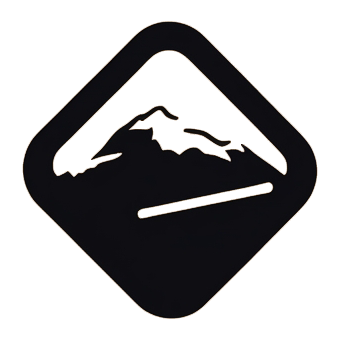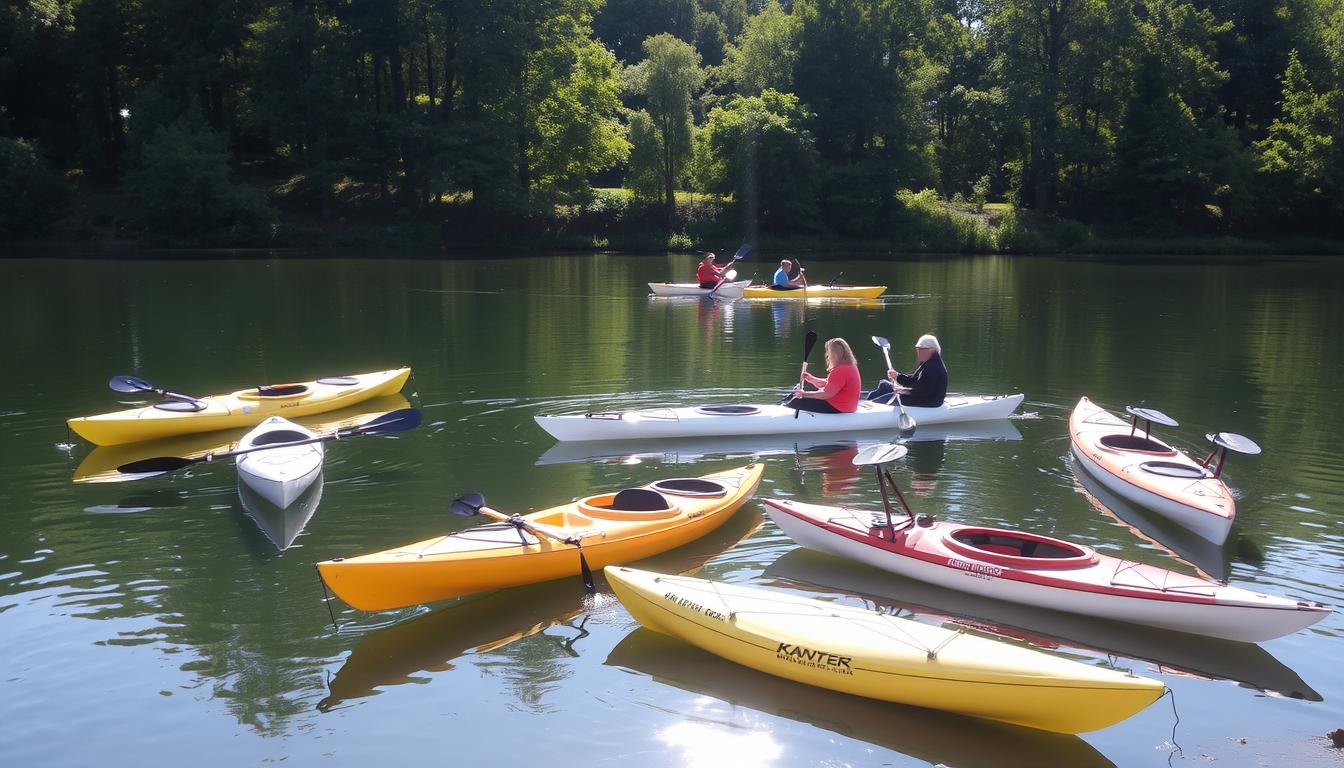Add a header block to begin generating the table of contents. This block will automatically update. Alternatively manually add items using the + button below. Once you have added at least one item this message will disappear.
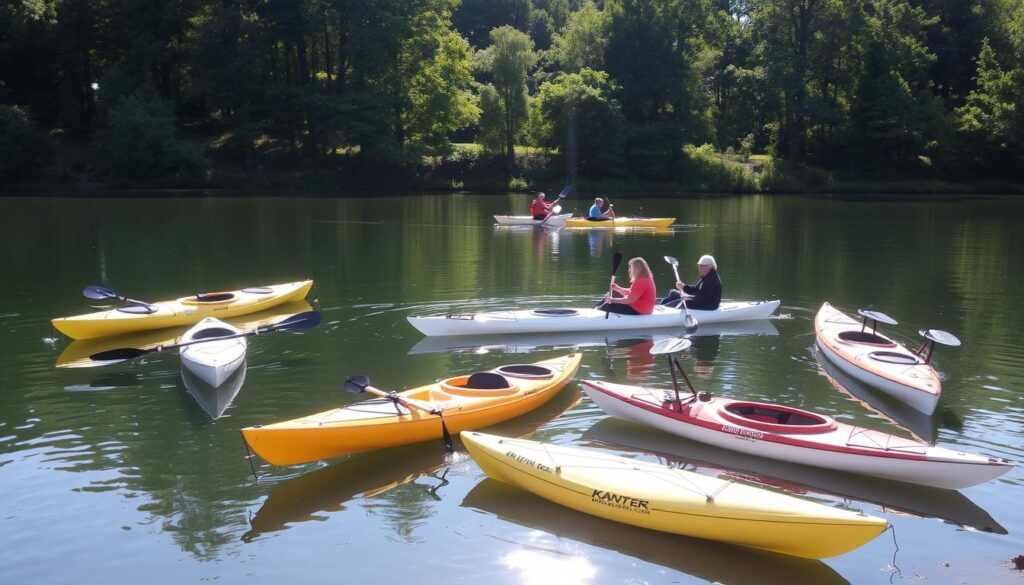
The first time I tipped over in my kayak, my heart sank fast. That moment taught me a key lesson about How to Make a Kayak More Stable. It’s not just a technical detail, but a critical skill that changes your paddling experience. Whether you paddle for fun or seriously, knowing how to stabilize your kayak is vital. It can turn your time on the water from anxious to confident.
Kayak stability tips are more than just technical tricks. They’re about making your time on the water safe and fun. Every paddler, from newbies to pros, can learn to improve balance and control. This guide will show you how to make your kayak more stable. You’ll stay dry, comfortable, and in control.
Key Takeaways
- Stability is crucial for kayak safety and enjoyment
- Multiple techniques can improve kayak balance
- Understanding hull design impacts stability
- Proper weight distribution is essential
- Modifications can significantly enhance kayak performance
Understanding Kayak Stability Fundamentals
Kayaking is a thrilling water sport that requires a good grasp of boat dynamics. To enhance your paddling, learning about kayak stability is key. It can greatly improve your performance and confidence on the water.
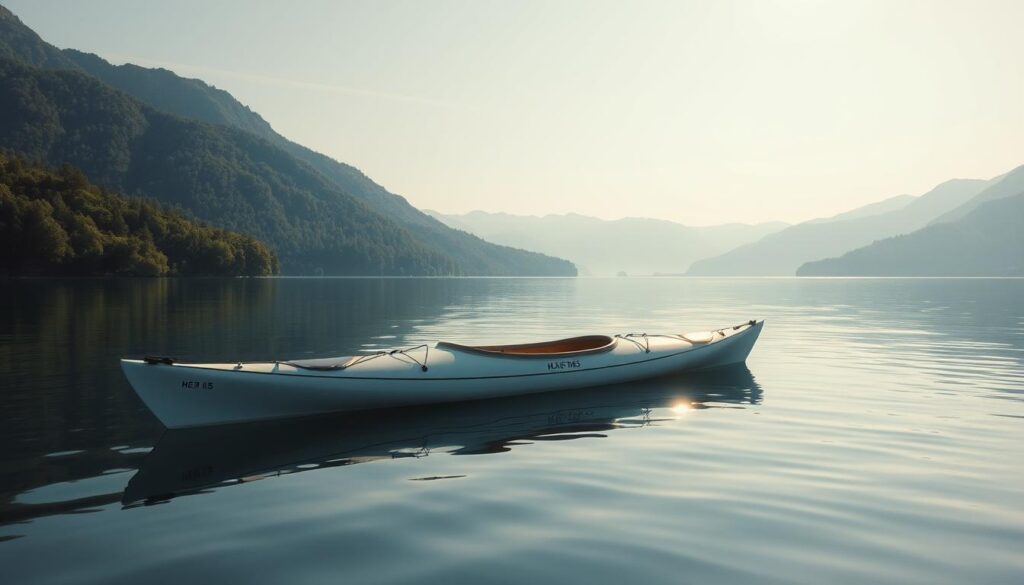
Primary vs. Secondary Stability
Kayak stability has two main types that affect your paddling:
- Primary Stability: This is how steady the kayak feels when you first sit in it on calm water. Wider kayaks usually offer more stability at first.
- Secondary Stability: This is about how well the kayak resists tipping when leaned or in rough water. Narrow kayaks often do better in this area.
Factors Affecting Kayak Balance
Several things can impact your kayak balance:
- Your body weight and how you sit
- The water conditions and how rough the waves are
- The design and shape of the kayak
- Where you put your gear and how much you carry
“Understanding your kayak’s stability is the first step to becoming a confident paddler.” – Professional Kayaking Instructor
Hull Design Basics
The design of the kayak’s hull is vital for stability. Different shapes give different benefits:
- Flat hulls give the most initial stability
- Rounded hulls are better for secondary stability
- V-shaped hulls help with tracking and speed
By grasping these basic stability aspects, you’ll be ready to pick the right kayak. This will help improve your paddling skills.
How to Make a Kayak More Stable: Essential Tips for Beginners
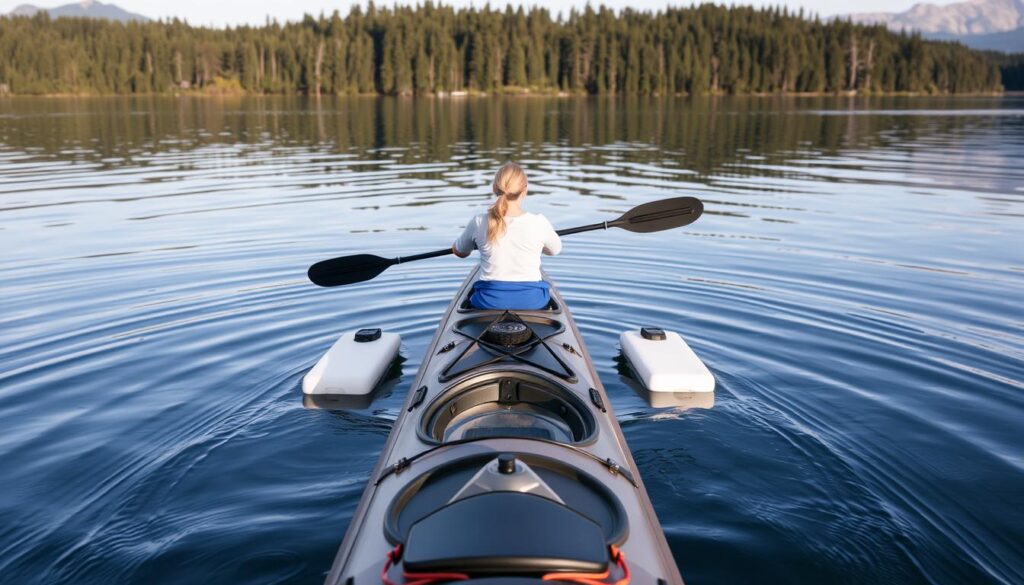
Learning to make a kayak stable is key for new paddlers. It helps them feel more confident on the water. Tips on kayak stability can make your paddling fun and stress-free.
First, focus on your body position. Your core is vital for balance. Sit up straight with your back and feet on the foot pegs. Good posture helps prevent wobbling.
“Stability is 90% technique and 10% equipment” – Experienced Kayaking Instructor
Here are essential kayak stability tips for beginners:
- Keep your center of gravity low by sitting centered in the kayak
- Practice smooth, controlled paddle strokes
- Look at the horizon, not directly down at the water
- Start in calm, sheltered waters to build confidence
Your paddling technique greatly affects stability. Use smooth, deliberate strokes and avoid sudden movements. Your paddle should enter the water close to the kayak and move in a controlled arc. Beginners often create instability by making jerky or uncoordinated movements.
Think about taking professional kayaking lessons. They can help you learn faster. Instructors offer personalized advice on stability and teach you techniques that boost your confidence on the water.
Optimizing Weight Distribution for Better Balance
Kayak stability depends a lot on how you distribute your weight. Knowing how to balance your gear and your body can greatly improve your kayaking. It also makes it safer.
Learning to distribute weight in your kayak is key to better balance and performance. How you load and position your gear affects your kayak’s handling on the water.
Proper Gear Placement Strategies
Here are important tips for packing your kayak right:
- Put heavy items near the kayak’s center
- Spread weight evenly on both sides
- Use light items for the bow and stern
Personal Positioning Techniques
Your body position is vital for kayak stability. Sit centered and keep a balanced posture to control better and avoid tilting.
“The key to kayak stability is understanding how your body and gear interact with the water’s surface.” – Professional Kayaking Instructor
Load Distribution Techniques
Each kayaking trip needs a different load distribution strategy:
- Day trips: Use minimal gear for balanced weight
- Multi-day trips: Pack smartly
- Fishing trips: Consider extra gear weight
By managing kayak weight distribution well, you’ll have a more stable and fun paddling experience. This approach reduces risks and boosts performance.
Selecting the Right Kayak Width and Design
Choosing the perfect kayak means understanding how its design affects your paddling. The width and shape of your kayak greatly impact its performance and balance on the water.
Different hull designs offer unique stability features. Wider kayaks are more stable but slower and harder to maneuver. When trying to make a kayak more stable, consider these design elements:
- Flat-bottom hulls: Great for beginners
- Rounded hulls: Better for experienced paddlers
- V-shaped hulls: Faster with moderate stability
“The right hull design can transform your kayaking experience from challenging to comfortable.” – Professional Kayaking Instructor
Your skill level and the water you paddle on should guide your kayak choice. Beginners often prefer wider, more stable kayaks. Experienced paddlers might choose narrower, faster models.
Think about these when picking your kayak width:
- Your body weight and size
- Paddling skill level
- Typical water conditions
- Intended use (fishing, touring, racing)
Stability isn’t just about width. It’s about finding the right kayak design for your needs and skill level.
Installing and Using Kayak Outriggers
Kayak outriggers are amazing accessories that change how you paddle. They add stability and confidence, especially for newbies or those in tough waters.
Outriggers add arms to your kayak’s sides, making it wider and more stable. They’re great for anglers, photographers, and anyone needing a steady spot.
Types of Outrigger Systems
- Fixed outriggers: Permanent installations with rigid support
- Removable outriggers: Flexible attachments for occasional use
- Inflatable outriggers: Compact and lightweight design
- Telescoping outriggers: Adjustable length for different kayak sizes
Installation Guidelines
Installing kayak outriggers needs careful thought for your kayak model. Most attach via:
- Mounting brackets
- Existing rod holders
- Custom attachment points
“Proper installation is key to maximizing the effectiveness of your kayak stabilizing accessories.” – Professional Kayak Instructor
When to Use Stabilizers
Use kayak outriggers in these situations:
- Fishing in rough waters
- Photography and filming
- Beginners building confidence
- Kayaking with children
- Navigating challenging water conditions
Outriggers offer great stability but may slow you down and make turning harder. Think about if the benefits are worth it for your kayaking style.
Advanced Ballast System Solutions
Kayak ballast systems are a smart way to make your kayak more stable. They lower your kayak’s center of gravity. This makes paddling more balanced and secure.
To make your kayak stable, you need to know about ballast systems. There are many options:
- Water-filled bladder systems
- Solid weight compartments
- Adjustable ballast bags
- Custom weight distribution solutions
Water bladders are a favorite among kayakers. They are flexible and can be placed to improve weight distribution. By adding or removing water, you can adjust your kayak’s stability for different paddling conditions.
“Stability is not about eliminating movement, but managing it effectively” – Professional Kayaking Instructor
When picking a ballast system, think about your kayak’s design, how you plan to use it, and what feels comfortable for you. Lighter paddlers might need more precise weight placement than heavier ones.
Installing a ballast system needs careful planning. Make sure it:
- Fits well in your kayak
- Doesn’t get in the way of movement or comfort
- Keeps the right balance of weight
- Is easy to adjust during your trip
Experts suggest trying out different ballast setups to find what works best for you. Play with where and how much weight you add to find the most stable setup for your kayaking style.
Modifying Your Kayak Seat for Enhanced Stability
Kayak seat positioning is key to better balance and paddling. Your seat is more than a place to sit. It’s a vital part that affects your stability and comfort.
Learning to tweak your kayak seat can change your paddling. Making smart changes can help you stay in control and avoid capsizing.
Seat Height Adjustment Strategies
Lowering your seat can greatly improve balance by lowering your center of gravity. Here are some adjustments to try:
- Position the seat closer to the kayak’s hull bottom
- Use adjustable seat mechanisms
- Experiment with different height settings
Support Modifications for Stability
Boost your kayak’s stability with seat support upgrades:
| Modification Type | Stability Impact |
|---|---|
| Contoured Seat Padding | Improves Body Alignment |
| Thigh Braces | Increases Control |
| Lumbar Support | Reduces Fatigue |
Comfort Optimization Techniques
Comfort is key to balance. Choose seats that offer:
- Ergonomic design
- Adequate padding
- Proper width for your body type
“A well-fitted kayak seat is your foundation for stable and enjoyable paddling.” – Professional Kayaking Instructor
Every kayaker is different. Take time to try out various seat setups to find what works best for you.
DIY Kayak Stabilization Projects
Making your own kayak outriggers can save money and boost your confidence on the water. These homemade solutions are an affordable way to improve your kayak’s performance and safety.
Begin with simple projects that need minimal tools and basic materials. Here are some budget-friendly options to enhance your kayak’s stability:
- PVC Pipe Outriggers: Create custom stabilizers using affordable PVC pipes
- Pool Noodle Flotation System: An easy and inexpensive stability enhancement
- Foam Block Side Attachments: Improve balance with simple foam modifications
“Creativity and careful planning can transform your kayak’s stability without breaking the bank.”
For your DIY kayak stabilization project, you’ll need:
| Material | Estimated Cost | Difficulty Level |
|---|---|---|
| PVC Pipes | $15-$30 | Easy |
| Pool Noodles | $5-$10 | Very Easy |
| Foam Blocks | $20-$40 | Moderate |
When designing your diy kayak outriggers, focus on safety and proper attachment. Measure carefully, use waterproof sealants, and test in calm water before longer trips.
Pro Tip: Always check local regulations and manufacturer warranties before making significant modifications to your kayak.
Professional Modifications and Upgrades
Looking to boost your kayak’s stability? Professional modifications can do more than basic accessories. They can change your paddling game, making it safer and more fun.
Custom Hull Alterations
Experts can tweak your kayak’s hull for better stability. They might reshape it or add special sponsons. They also strengthen key areas to reduce wobbling.
- Reshaping hull contours for better water displacement
- Adding specialized sponsons for increased lateral stability
- Reinforcing critical structural points to minimize roll
Professional Installation Services
Need help installing stabilizing gear? Professionals can do it right. They ensure your kayak stays safe and stable.
| Service Type | Average Cost | Complexity |
|---|---|---|
| Outrigger Installation | $250-$500 | Moderate |
| Hull Modification | $500-$1200 | High |
| Custom Ballast System | $300-$750 | Low-Moderate |
Cost-Benefit Analysis
Thinking about upgrading your kayak? Professional changes might seem pricey, but they’re worth it. They offer precision and guaranteed results, unlike DIY fixes.
“Professional modifications transform your kayak from basic to exceptional.” – Kayaking Experts Magazine
Investing in pro kayak gear can really pay off. It boosts your confidence and performance on the water.
Safety Considerations When Modifying Your Kayak
When you make your kayak more stable, safety is key. Adding accessories for stability can make paddling better. But, you must do it carefully and know what you’re doing.
“Safety should always be your top priority when making any modifications to your kayak.” – Professional Kayaking Association
Before you start, think about these important tips for kayak stability:
- Check how changes affect your kayak’s structure
- Make sure stability doesn’t hurt how well you can move
- Try out changes in safe water first
- Get advice from kayak experts before big changes
Improper kayak changes can lead to bad performance and danger. Wind and unexpected water can be harder to handle if your kayak isn’t stable.
| Safety Consideration | Recommended Action |
|---|---|
| Structural Integrity | Professional assessment before modification |
| Performance Impact | Gradual testing in controlled settings |
| Personal Safety | Always wear personal flotation device |
Always put safety first, even with stability changes. Carry emergency gear, wear the right clothes, and never paddle alone in tough weather.
Conclusion
Improving kayak balance is a journey that mixes smart equipment changes and learning new skills. Finding the right way to make a kayak stable isn’t easy. It depends on your kayaking spot, skill level, and what feels right to you.
To get better stability, know your kayak’s design and try different weight setups. You might also want to add outriggers or adjust your seat. Experts say to start small and add more as you get better.
Always keep safety first when trying to make your kayak more stable. Think about each change carefully and test it well. Whether you do it yourself or get help, remember that practice is key.
Your kayaking journey is special, and finding stability is a personal quest. By using the tips from this guide, you’ll get better at paddling and feel more in control.
